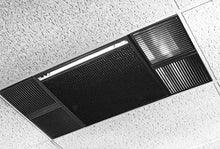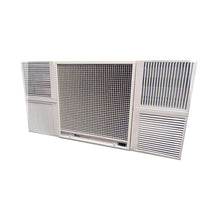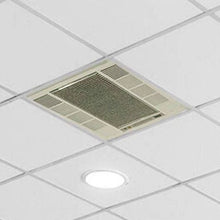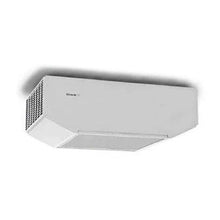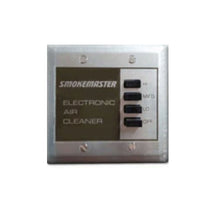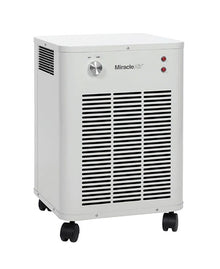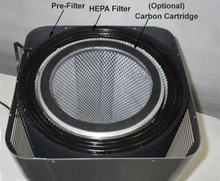The "Clean Air" Advantage: Marketing Your Business as a Smoke-Free Oasis (Even for Smokers)
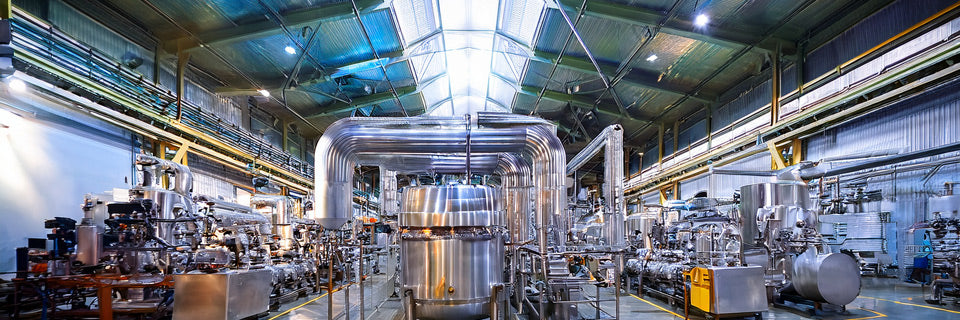
The moment a potential customer steps across your threshold, they are forming an opinion that goes far deeper than the quality of your product or service. They are, quite literally, taking a measure of your business through the air they breathe. For forward-thinking businesses, this visceral first impression presents a powerful, and often underutilized, marketing opportunity. If your establishment—be it a restaurant, boutique, hotel lobby, or office—is still occasionally dealing with the telltale signs of smoke, lingering odors, or simply that pervasive stuffiness, you are silently eroding your potential for customer loyalty and long-term success.
The shift toward smoke-free environments has largely been driven by public health policy, but the business benefits now go far beyond mere compliance. What we at Commercial Air Purifiers, LLC have seen through our years of experience is that transforming your business into a genuine "Clean Air Oasis" is one of the most effective unique selling propositions in the modern market. This strategy is not about ostracizing anyone; it is about providing a superior, health-conscious environment that attracts and retains every demographic, including those who may smoke but still prioritize clean indoor air for themselves and their families when patronizing a business. It’s an investment in a universal comfort that pays dividends.
The Invisible Threat: Why Indoor Air Quality is a Business Liability
The air inside a commercial building can often be significantly more polluted than the air outside, according to the U.S. Environmental Protection Agency (EPA). This is a critical context for any business owner. In this confined environment, pollutants from cleaning chemicals, building materials, and human activity accumulate. When you introduce smoke—whether from cigarettes, cigars, or even the aerosols from e-cigarettes—you dramatically amplify the concentration of harmful airborne particles.
The financial and experiential cost of poor indoor air quality (IAQ) is substantial. Studies have shown a clear link between a comfortable, clean-air environment and consumer behavior. Research on consumer spending patterns in relation to air quality, for instance, has demonstrated that when airborne pollutants increase, people are more likely to stay home, avoiding retail and recreational opportunities. For businesses, this translates directly to lost revenue. Moreover, poor IAQ can negatively affect a customer's emotional state, triggering avoidance behaviors as detailed in psychological models like the Mehrabian-Russell (M-R) model, which links environmental stimuli to emotional responses and, ultimately, approach or avoidance actions. In simple terms: bad air makes people uncomfortable, and uncomfortable customers leave sooner and are less likely to return.
The mere presence of secondhand smoke (SHS), also known as environmental tobacco smoke (ETS), is a major, yet often preventable, contributor to this problem. The science on SHS is unequivocal: it is a proven health hazard that contains thousands of chemicals, with no safe level of exposure. The American Lung Association has reported that even brief exposure can cause immediate adverse effects on the cardiovascular system and can contribute to serious long-term health issues in non-smokers, including lung cancer. Even the aerosols from Electronic Nicotine Delivery Systems (ENDS), like e-cigarettes, are not harmless and should be treated with the same caution as SHS. For a business, ignoring this reality means knowingly exposing your customers and employees to a health risk that can damage your reputation, lead to complaints, and increase liability. The issue is no longer just about offensive odors; it’s about a measurable health and comfort deficit that directly undermines your bottom line and brand image.
Creating Your Unique Selling Proposition: The Clean Air Oasis
The concept of a "Clean Air Oasis" flips the narrative from simply banning smoking to proactively providing something superior. This is not a restriction; it's a premium feature. By making superior indoor air quality your unique selling proposition (USP), you differentiate your business in a powerful way that resonates with today’s health-aware consumer. This strategy appeals to four distinct customer groups:
-
Non-Smokers and Families: This demographic actively seeks out environments free of smoke, odors, and excessive allergens, viewing a commitment to clean air as an extension of a business’s overall quality and care.
-
Smokers: Even customers who smoke do not want to breathe smoke or offensive odors when they are dining, shopping, or relaxing indoors. They appreciate a space that offers a genuinely fresh, clean break.
-
The Health-Conscious: Individuals with allergies, asthma, or general health concerns will specifically choose businesses that demonstrate an investment in air filtration and ventilation.
-
Employees: A superior indoor environment reduces sick days, improves focus, and increases overall employee morale and productivity, which in turn leads to better customer service.
At Commercial Air Purifiers, LLC, we have seen first-hand how businesses that integrate superior air management solutions can leverage this to improve customer dwell time and loyalty. Our experience shows that when air quality is noticeably fresh, customers are more comfortable, stay longer, and spend more. This is why a simple "No Smoking" sign is no longer enough; a Clean Air Oasis requires demonstrating a comprehensive, active commitment to the indoor environment.
The Pillars of a Superior Indoor Air Quality Strategy
Building a genuine Clean Air Oasis involves more than just opening a window or spraying a deodorizer. It requires a strategic, multi-layered approach to air management that reflects industry-leading standards.
1. Embracing High-Efficiency Filtration Technology
The cornerstone of a clean air environment is the ability to effectively remove the harmful particulate matter and gaseous pollutants that compromise IAQ. We strongly advocate for the use of commercial-grade air purification solutions that employ a combination of technologies, most notably high-efficiency particulate air (HEPA) filtration and activated carbon media.
-
HEPA Filtration: True HEPA filters are designed to capture 99.97% of airborne particles as small as 0.3 microns. Crucially, this includes the ultrafine particles found in all forms of smoke and aerosol, as well as allergens, dust, and microbial contaminants.
-
Activated Carbon: Particulate filters alone cannot remove volatile organic compounds (VOCs) and odors. Activated carbon and chemisorbents are essential for addressing the gaseous phase of pollutants, effectively trapping the molecular compounds that create lingering smells, including those from tobacco smoke, cooking, and chemicals.
This strategic layering is essential. Simply relying on the HVAC system's standard filters is rarely sufficient for achieving superior indoor air quality, particularly in commercial settings with higher occupancy and specialized contaminant sources.
2. Going Beyond Minimum Ventilation Standards
Ventilation is the process of introducing fresh outdoor air and removing stale indoor air. While building codes mandate minimum ventilation rates, these rates are often the absolute minimum required for health and are not optimized for a superior customer experience. The American Society of Heating, Refrigerating and Air-Conditioning Engineers (ASHRAE) sets comprehensive standards, such as ASHRAE 62.1, for achieving acceptable IAQ through ventilation. As Commercial Air Purifiers, LLC, we recommend that businesses strive to exceed these minimums where possible and practical. However, in many urban or high-pollution areas, simply bringing in more outdoor air can introduce a new set of problems—outdoor pollution. This is where high-grade air purification solutions become necessary, as they act to clean the recirculated indoor air, effectively reducing the necessary volume of outside air needed to maintain cleanliness while still ensuring a comfortable level.
3. Transparent Communication and Certification
A clean air environment is only a true USP if customers know about it. Transparency is a critical component of trustworthiness. Do not simply install a system in the back room; make your commitment visible and verifiable.
-
Visual Cues: Utilize subtle signage or digital displays that announce your use of advanced air filtration systems. Phrases like, "We are committed to superior indoor air quality with commercial-grade purification" are effective.
-
Employee Training: Ensure your staff understands the system’s operation and can confidently answer customer questions, turning them into air quality ambassadors.
-
External Verification: Seek verification from a third-party IAQ specialist to test and certify your air quality levels. This external validation bolsters your claims with authoritative, unbiased data, transforming a marketing claim into a verifiable fact.
By adopting this level of transparency, your business is not just claiming to be smoke-free; it is demonstrating an authoritative commitment to customer health and comfort, which is what builds deep, lasting trust.
The Financial Case: Calculating the Return on Investment
While implementing a comprehensive air quality solution is an investment, the return on investment (ROI) is tangible and multi-faceted.
First, there are direct cost savings. Smoke and odors cause rapid deterioration of furnishings, carpets, and fabrics, leading to higher cleaning and maintenance costs. A 2006 study found that smoke-free offices saved approximately $728 per 1,000 square feet per year in maintenance costs alone. Furthermore, a superior environment has been linked to increased productivity and reduced absenteeism among employees. An analysis of the business case for clean air has even estimated significant economic benefits from widespread improvements in indoor environments, citing reduced health costs and increased worker performance.
Second, and more importantly for a customer-facing business, is the revenue side. When customers feel comfortable, they stay longer. In a casual dining setting, for example, an extra 15 minutes of dwell time can translate to an additional drink or dessert order. In retail, a comfortable, fresh environment encourages browsing and reduces the negative emotions that can stifle impulse buying. For businesses like Commercial Air Purifiers, LLC, our focus is always on providing the best technology to solve the problem, understanding that the value is ultimately in the increased customer engagement and loyalty that our systems facilitate.
Practical Steps to Launch Your Clean Air Marketing Initiative
Taking the step to market your business as a Clean Air Oasis requires deliberate action.
-
Air Quality Audit: Begin with an assessment of your current indoor environment. Identify all potential sources of pollutants, including ventilation deficiencies, areas susceptible to moisture, and any lingering odor problems. This professional analysis provides the baseline for your improvement plan.
-
Strategic System Integration: Based on the audit and your specific business needs (e.g., high traffic, proximity to outdoor pollution, or occasional smoke exposure), integrate commercial-grade air purification solutions. We at Commercial Air Purifiers, LLC advise choosing systems that meet rigorous performance standards and are scaled appropriately for your square footage and air change rate requirements. Consider solutions with high CADR (Clean Air Delivery Rate) and those that are optimized for particle and odor removal.
-
Develop Your "Clean Air" Story: Craft a simple, positive message around your new USP. Avoid vague claims. Instead, focus on the action you have taken. For example: "We’ve invested in multi-stage air purification to ensure every breath you take inside is fresh and clean."
-
Targeted Outreach: Use your digital channels to promote your Clean Air Oasis. Mention your superior indoor air quality on your website, in social media posts, and through email campaigns. Use long-tail keywords like superior indoor air quality business and market clean air business to attract the growing segment of health-conscious consumers actively searching for these environments. Your unique selling proposition is now your air.
Conclusion
The pursuit of superior indoor air quality is no longer just a regulatory checkbox—it is a powerful, competitive business advantage. In a post-2020 world, consumers are more aware than ever of the quality of the air they breathe and are actively seeking businesses that demonstrate a genuine commitment to their health and comfort. By strategically investing in commercial-grade air purification and transparently marketing your establishment as a Clean Air Oasis, you are not simply selling a product or a service; you are selling a premium, comfortable, and trustworthy experience.
This shift transforms a historical problem—lingering smoke or stale air—into a powerful attractor, securing the loyalty of all customers, and positioning your brand as a confident leader in customer care. The team at Commercial Air Purifiers, LLC is dedicated to ensuring you have the expertise and the best air purification solutions available to make this transformation a reality and capture the immense, clear advantage of clean indoor air.
FAQ: Addressing Common Air Quality Concerns
Q: How can I ensure our business is a smoke-free oasis if we have an outdoor patio where people smoke?
A: The key is to manage the transition and entry points. Even if smoking is permitted in designated outdoor areas, you must prevent smoke from migrating inside. This requires strategic placement of commercial air purifiers near entrances, ensuring positive pressure ventilation where possible (pushing air out, not drawing it in), and having clearly defined, well-maintained smoke-free transition areas. The goal is to provide a noticeable, high-quality air difference the moment a customer steps inside.
Q: Are standard HVAC filters (like MERV 8) enough to handle odors and smoke particles?
A: In almost all commercial settings, no. While MERV 8 filters capture larger particles, they are ineffective against the ultrafine particles in smoke and the gaseous molecules that cause odors (VOCs). Achieving a true "Clean Air Oasis" requires dedicated, commercial-grade air purifiers with at least a HEPA level of filtration (MERV 17 and higher) to capture the fine particulates, combined with a significant bed of activated carbon to adsorb the odor-causing gases.
Q: What is the single most important factor for improving my business's indoor air quality?
A: The most critical factor is a multi-pronged strategy that addresses both particulate and gaseous contaminants. However, from our experience at Commercial Air Purifiers, LLC, the consistent, reliable removal of sub-micron particles (PM2.5 and smaller) is paramount, as these are the primary components of smoke, allergens, and the pollutants linked to adverse health effects. This removal is best achieved through high-efficiency HEPA filtration integrated with existing HVAC or through powerful, standalone commercial units.

